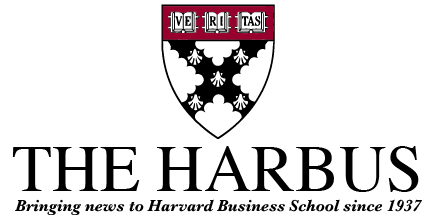The Boston Marathon is only one week away, and it is time to nail down some logistical issues as well as answer some of those burning questions that I know have been keeping you all up at night. But first, let’s announce the first winner in this year’s marathon. As many of you know, several HBS marathon runners raising money for the local Boys & Girls Club raffled off a treadmill that was donated by Reebok. Dean Carl Kester presided over the raffle yesterday. And the winner is…. Ms. Mia Ward of New York!!! Though not an HBSer, Mia would have clearly passed Quantitative Methods by realizing that she had a better chance of winning if she bought more tickets. (She actually bought approximately 15). Now for some FAQs.
When was the first marathon?
In 490 BC, the Greek soldier Pheidippides ran 24 miles from a battlefield near the city of Marathon to Athens to report that the Greeks had whupped some Persian butt. Why he was in such a rush is beyond me, as the Greeks had won the battle. Pheidippides definitely comes across as the type of guy who would be a constant pit-diver at HBS. Anyways, he delivered his message and promptly dropped dead. So, a few thousand years later, these mental giants decided to revive this “tradition.” I believe the conversation went something like this:
An inebriated Spiro – “Remember when that guy ran so far that he fell dead? Let’s get a bunch of people to do that.”
A likewise inebriated Gyro – “Totally.”
So there you have the history of the marathon. Somewhere along the way, the British (always looking to impose their values on the rest of the world) changed the distance to 26.2 miles, the distance we run today.
Who organizes the Boston Marathon?
Good question. Very insightful. Since 1897, when the first Boston Marathon was run, the Boston Athletic Association (BAA) has been the organizer. Actually, the BAA has been around since 1887, and currently the principal focus of the association is organizing the Marathon as well as developing other community running programs. This year is the 105th running of the Boston Marathon.
What is Patriot’s Day?
Every year, the Boston Marathon is run on Patriot’s Day, a holiday celebrated only in Massachusetts and Maine. Though the actual holiday is April 19th, it is celebrated on the third Monday in March. On April 18th, 1775, Paul Revere rode from Charlestown to Lexington to warn the countryside that the British troops were coming. The next day was the Battle of Lexington and Concord, the beginning of the Revolutionary War. Patriot’s Day celebrates these first battles, and the noble efforts of colonialists to throw off the yoke of their hated oppressors, the British. Viva la revolution!
Where and when does the Boston Marathon take place?
The Marathon begins in the town of Hopkinton. The first half of the race runs along Route 135. Near Wellesley College the runners head to Route 16. At Mile 17, the runners take a right onto Commonwealth Ave. This is the beginning of the infamous Heartbreak Hill. Heartbreak Hill is actually the third hill in a series of hills (over four miles) that summit at Boston College. Then it is a quick right onto Chestnut Hill followed by a left onto Beacon Street. The runners eventually meet up again with Commonwealth Avenue, and finish by taking a right onto Hereford and a left onto Boylston. The Marathon finishes near the John Hancock Tower in Copley Square.
A terrific map can be found at bostonmarathon.com.
The Marathon start time is Monday at 12 noon. Wheelchair racers begin just before then. The winners will complete the Marathon in approximately one and a half hours (wheelchair) and just over two hours (running). It may be a short while later that the first HBSer crosses the line.
Where is the best place to watch the Marathon?
There is no bad seat in the house. With nearly a half million other spectators, though, it is important to get out a bit early to reserve some curbside seating. The spectators tend to be a bit more packed in towards the end of the race. If you do not want to travel too far from school, the most convenient viewing area may be just past Heartbreak Hill, on Boylston. The benefit of being here is that by this point the racers have completed the most difficult part of the race and are in a relatively good mood. Seeing someone on Heartbreak Hill can be a miserable experience. Make sure you dress warmly as average Marathon temperatures are under fifty degrees.
If you cannot make it to the Marathon, though, you can still track your favorite runners through the miracle of the Internet and wireless technology. Nextel will allow runners to have automatic messages sent to specified e-mail/pager addresses as the runners pass four separate milestones in the race. Also, by logging onto the BAA website (listed above) Compaq technology will allow spectators to track the progress of your runners as they pass each 5K marker. All you need is their bib number.
In closing….
HBS is fortunate to have a number of runners in this year’s race. Approximately thirty of your classmates will begin the race, having either qualified for the race, as runners for a local charity, or simply by running as a “bandit.” Please come out and show your support!

